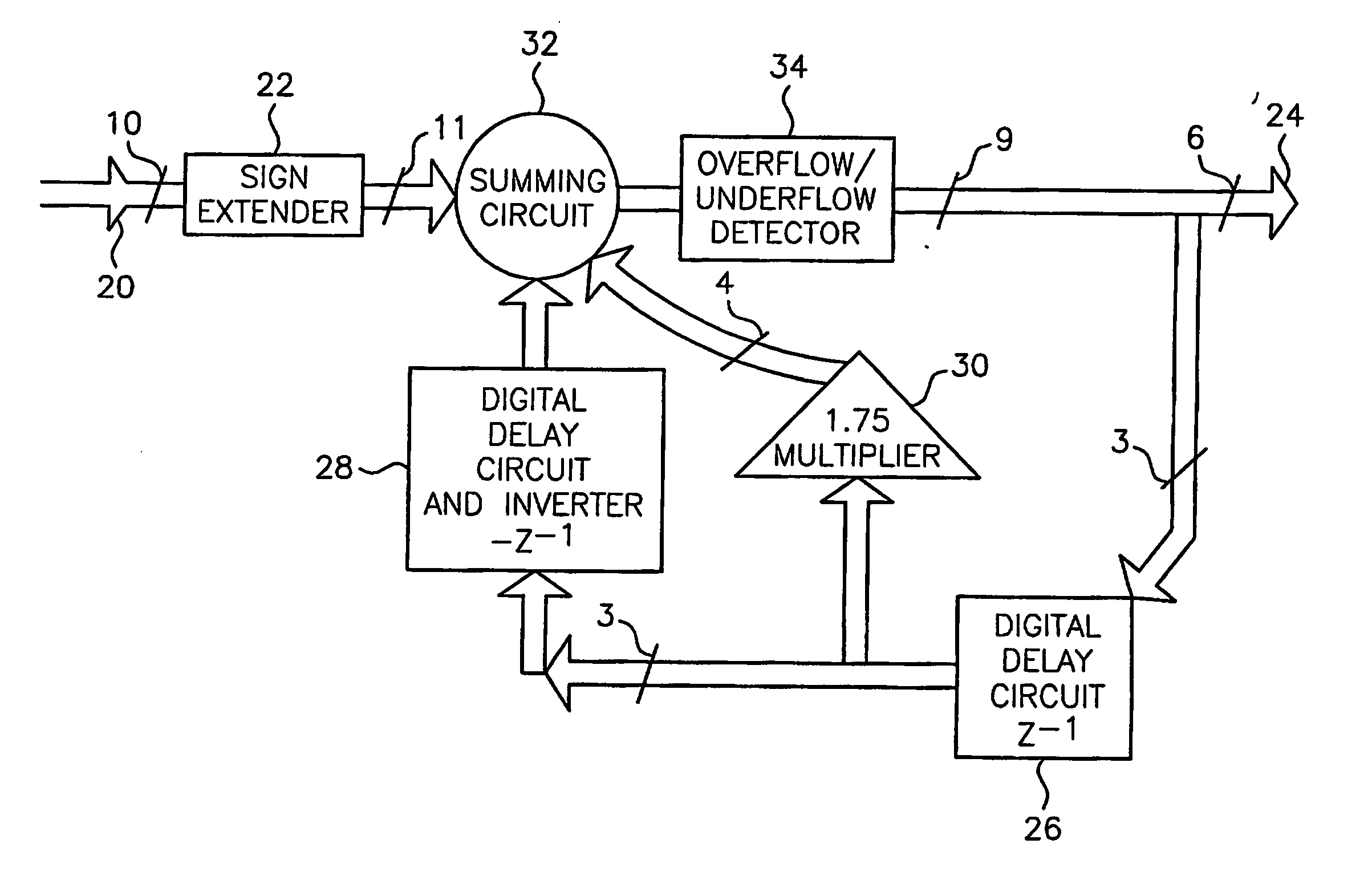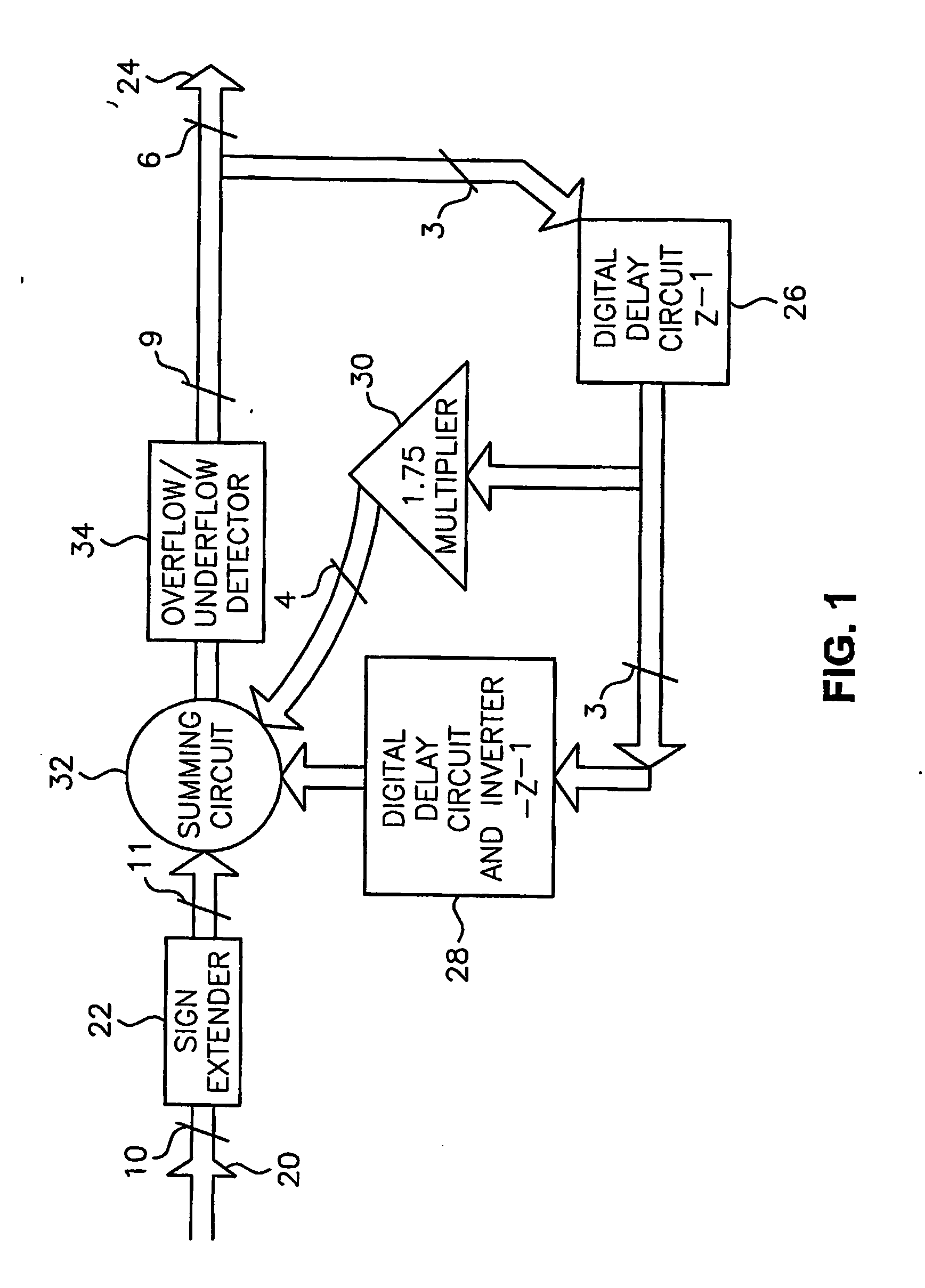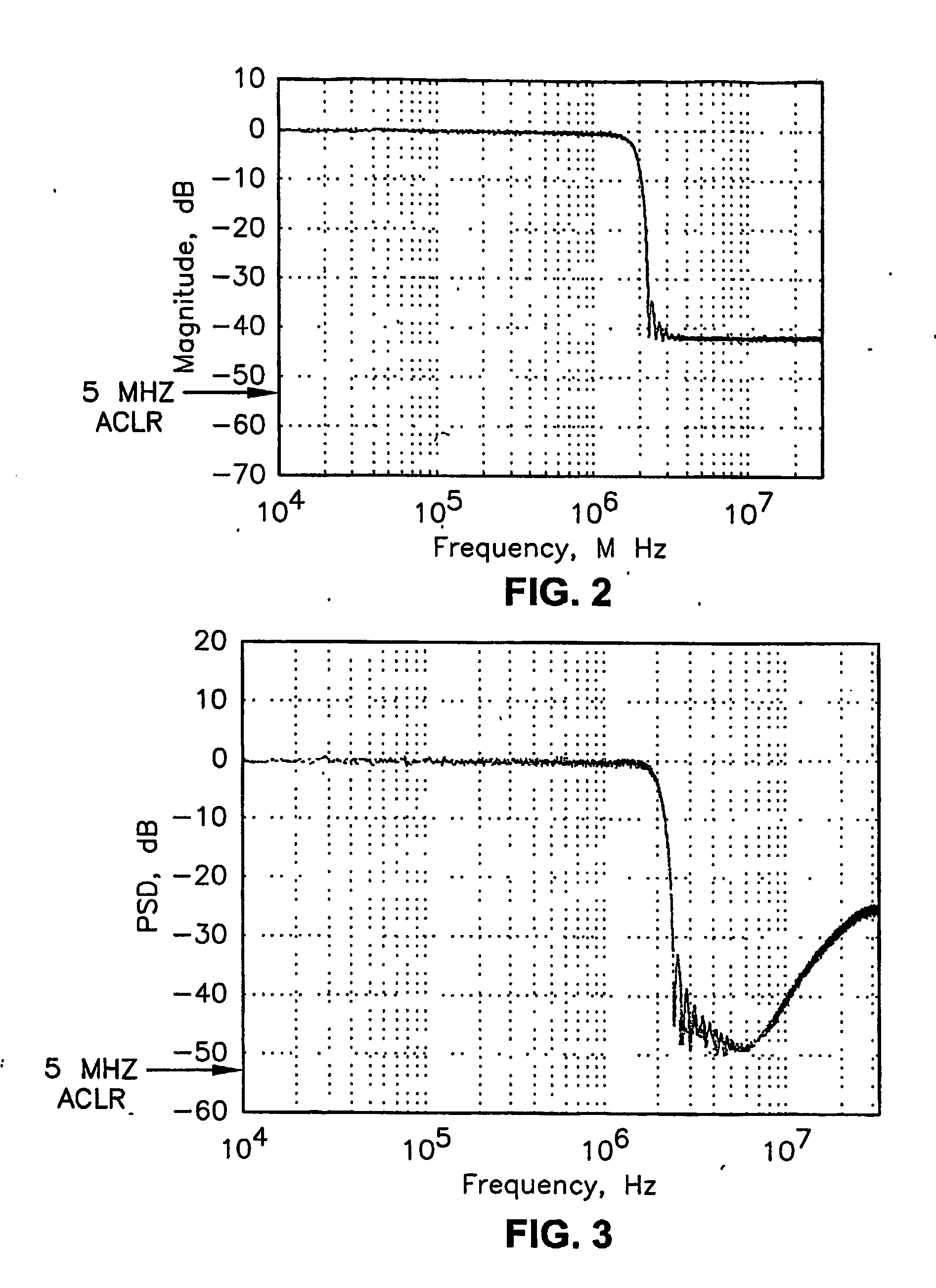Bandpass delta sigma truncator and method of truncating a multi-bit digital signal
a multi-bit digital signal and truncator technology, applied in the field of radio frequency transmission, can solve the problem that the 5 mhz aclr specification is somewhat more difficult to m
- Summary
- Abstract
- Description
- Claims
- Application Information
AI Technical Summary
Benefits of technology
Problems solved by technology
Method used
Image
Examples
Embodiment Construction
[0010] Referring to FIG. 1, a bandpass delta sigma truncator, constructed in accordance with the present invention, includes input means for receiving a series of first multi-bit digital signals each having a number of data bits and a first number of sign bits. Such means are represented by an input terminal 20 connected, for example, to a baseband processor (not shown) from which the series of first multi-bit digital signals are supplied.
[0011] The bandpass delta sigma truncator of the present invention also includes sign extending means for sign extending each of the first multi-bit digital signals to a second multi-bit digital signal having the same number of data bits as the number of data bits in the first multi-bit digital signals and a second number of sign bits. Such means can be a sign extender 22 of conventional construction and operation. As will become clear below, the sign extension function serves to detect overflow or underflow as the first multi-bit digital signals ...
PUM
 Login to View More
Login to View More Abstract
Description
Claims
Application Information
 Login to View More
Login to View More - R&D
- Intellectual Property
- Life Sciences
- Materials
- Tech Scout
- Unparalleled Data Quality
- Higher Quality Content
- 60% Fewer Hallucinations
Browse by: Latest US Patents, China's latest patents, Technical Efficacy Thesaurus, Application Domain, Technology Topic, Popular Technical Reports.
© 2025 PatSnap. All rights reserved.Legal|Privacy policy|Modern Slavery Act Transparency Statement|Sitemap|About US| Contact US: help@patsnap.com



